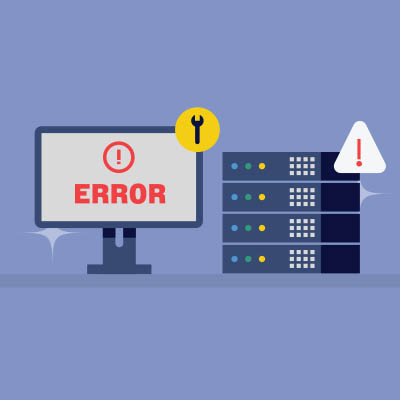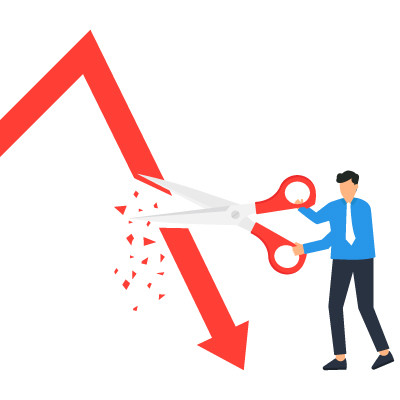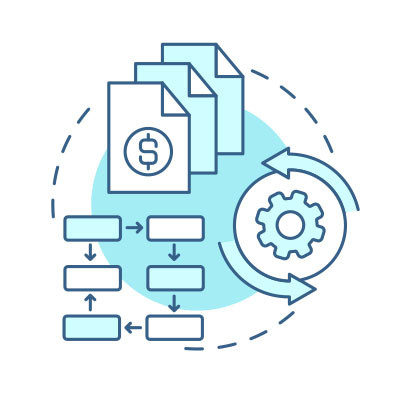If you want your business to succeed, you need to take care of your employees, but businesses sometimes let this important task slip in the throes of the day-to-day. Deloitte estimates that around 8 out of every 10 wage workers show signs of burnout. So the question then becomes… What are you doing about it?
Vertical IT Solutions Blog
It’s natural for businesses to rely on their tools, like IT, to achieve success, but if you don’t take care of your systems, it could lead to downtime. You can bypass many of these challenges with the right approach to technology maintenance. We want to highlight some of the proactive methods you can use to keep downtime to a minimum.
Being a green business is certainly not a bad thing. Not only does it help boost your company's environmental friendliness, but it can often attract customers and clients who prioritize the environment. Less mentioned, however, is how being greener can actually give your business an advantage in the right circumstances.
Projects are a big part of the small business model. Whether they are projects to improve organizational efficiency or productivity or projects that are completed for customers, strong project management is extremely important. Scope creep happens when a project becomes less efficient because the demands of the project keep changing. In today’s blog, we will try to define scope creep and how to prevent it from being a problem for your business.
Every business relies on technology for at least part of its operations. This means that every business—particularly those with operations that make IT an essential part of the process—will need access to some form of IT support.
For most small and medium-sized businesses today, managed IT is the best option. Let’s discuss a few reasons why this is.
“Quit.” The q-word is (at least, in the business setting) one of the worst four-letter words someone can use… usually. In the context you probably first thought of, yes, but there are plenty of times that quitting can directly benefit your operations.
For instance, let’s say you have a project that is eating all of your resources, with no real returns in sight. What do you do then?
Technology is an essential part of most business operations nowadays, regardless of the size of the business… and how that size may change over time. As such, it is essential that the infrastructure that supports this IT can adapt to these swells and declines.
Let’s discuss why it is so important that your IT infrastructure fits your business and a few best practices for tailoring it.
Obviously, we won’t tell you to cut down on your cybersecurity. That said, it can be easy to overinvest and overreach if you aren’t careful about what you’re implementing. This phenomenon is known as cybersecurity sprawl, and if not prevented, it can easily have serious consequences for your business. Let’s go into how to avoid this sprawl.
So, what is digital waste?
Digital waste is all the useless data in our data storage that lingers until we do something with it. Extra files no longer needed, old emails and chats, and old, blurry pictures you never have and will never use… all qualify as digital waste. While it’s easy to discount digital waste as an annoyance (which it certainly can be), it creates a much bigger and more serious problem.
Remote and hybrid work models have become more popular than ever, in no small part thanks to the improved technology businesses of all sizes can now access. Nevertheless, this shift has brought new challenges for organizations everywhere. One such challenge is maintaining and enhancing remote workplace engagement—a crucial aspect that directly impacts employee satisfaction, productivity, and retention.
In business technology, automation reigns supreme, especially for tedious tasks that offer little to the individual performing them. Remote management epitomizes such tasks, and strategic automation can greatly enhance organizational productivity. Let’s examine how automation can help you stay proactive.
If you could generate more revenue without spending more, wouldn’t you?
If you share most people's goals and aspirations, the answer is a resounding and enthusiastic “yes.” Scaling a business is an important element of continued success—provided it is carried out correctly. Let’s discuss how you can help ensure your success, partly by implementing the right technology.
Downtime in a business context can be considered a "business predator" because it can have detrimental effects on a company's operations, profitability, and overall success. Downtime refers to the period during which a business' critical systems, processes, or equipment are not functioning as intended. Here are some reasons why downtime is often seen as a threat to businesses.
Financial Impact
Downtime can result in significant financial losses. When key revenue-generating systems or production processes are unavailable, businesses may lose sales, incur extra expenses, or face penalties for failing to meet contractual obligations. Downtime can also prevent a business from pursuing new opportunities or responding to market changes. In a rapidly evolving market, missing out on opportunities can have long-term consequences, and can be the difference between business growth and stagnation.
Operational Impact
Downtime leads to decreased productivity as employees cannot perform their tasks efficiently. This results in wasted time, missed deadlines, and a drop in overall output. In cases where downtime is due to data loss or system failures, it can result in the loss of critical information, which can be difficult or impossible to recover. This can have severe consequences for businesses, especially when it comes to sensitive or irreplaceable data. Frequent downtime can demoralize employees who must deal with the frustration and stress of interrupted work. Low morale can lead to higher turnover rates and decreased employee engagement.
Customer Impact
Prolonged or frequent downtime can do significant damage to a company's reputation. Customers and partners may perceive the business as unreliable, which can be challenging to overcome. Also, these unfortunate companies may find it challenging to compete effectively in markets with companies that show better reliability.
If you struggle with downtime, you can do better. If you don’t, you need to ensure that continues. The IT professionals at Vertical IT Solutions can help. We can introduce you to technologies and strategies that are designed specifically to reduce downtime and improve operational efficiency. Get a professional perspective by calling (928) 889-8487 today.
Love them or hate them, self-service checkout registers in brick-and-mortar stores are here to stay… especially considering that research has demonstrated that Gen Z has about twice the level of buy-in to the automated point-of-sale terminals as Gen X does, and that self-checkout is the predominant form of payment today. With this success, many have wondered how welcome biometric payment processing might be.
As it turns out, it would seem it isn’t.
















